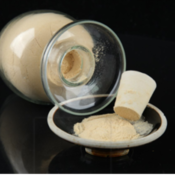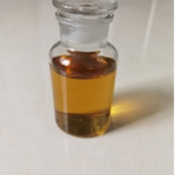Acid Pectinase
- Home
- Products & Applications
- Acid Pectinase


Acid Pectinase
Description:
This product is obtained by deep fermentation from Aspergillus niger, and it is widely used in the manufacturing of fruit and vegetable juice as well as wine. It also can be used in the feed diets and wood preservation.
Technical information:
- Available in liquid (light brown) 30,000 to 60,000 u/ml. and powder form (yellow) 30,000 to 60,000 u/g. Food grade: 300,000 u/g.
- Temperature range: 25 to 65℃ (Optimum temperature: 50 to 60℃).
- pH range: 2.5-4.5 (Optimum pH: 3.3 -4.0)
- Unit definition: The amount of enzyme needed to hydrolyze 1 mg of galacturonic acid from 1 mg of pectin in one hour at 50℃ and at a of pH of 3.5 (Standard: QB 1502-1992)
Mode of Action:
Pectinase is a biocatalyst with multiple components, mainly PMGL; PG; PGL; PE. Pectinase will degrade pectin molecules.
Uses:
- Fruit and vegetable juice
Helps in the clarification and stabilization of fruit and vegetable juice and reduces the viscosity of puree and vegetable sauces.
Recommended dosage: 0.05-3.0 L/ton of fruit or vegetable slurry based on 30,000 u/ml at a pH of 3.4-4.0 at 45℃ for 1 to 5 hrs.
- Wine
As in juices, it helps in its clarification and color stabilization.
Recommended dosage: 0.05-2.0 L/ton of slurry based on 30,000 u/ml. Pectinase can be added in the slurry or after the dilution.
- Feed
It improves the digestibility of the diet by hydrolyzing complex fibers and making nutrients readily available which will reflect in a better food conversion.
Recommended dosage: 0.03-0.06 g/ton of complete feed based on 30,000 u/g.
Packaging, Storage & Handling
- Liquid: Plastic drums of 22; 200; 840 and 1,000 L.
- Powder: 20 kg cartons; 25 kg bags and 25 kg drums.
- Storage & handling: Avoid exposure to direct sunlight; keep in clean, cool, and dry place.
